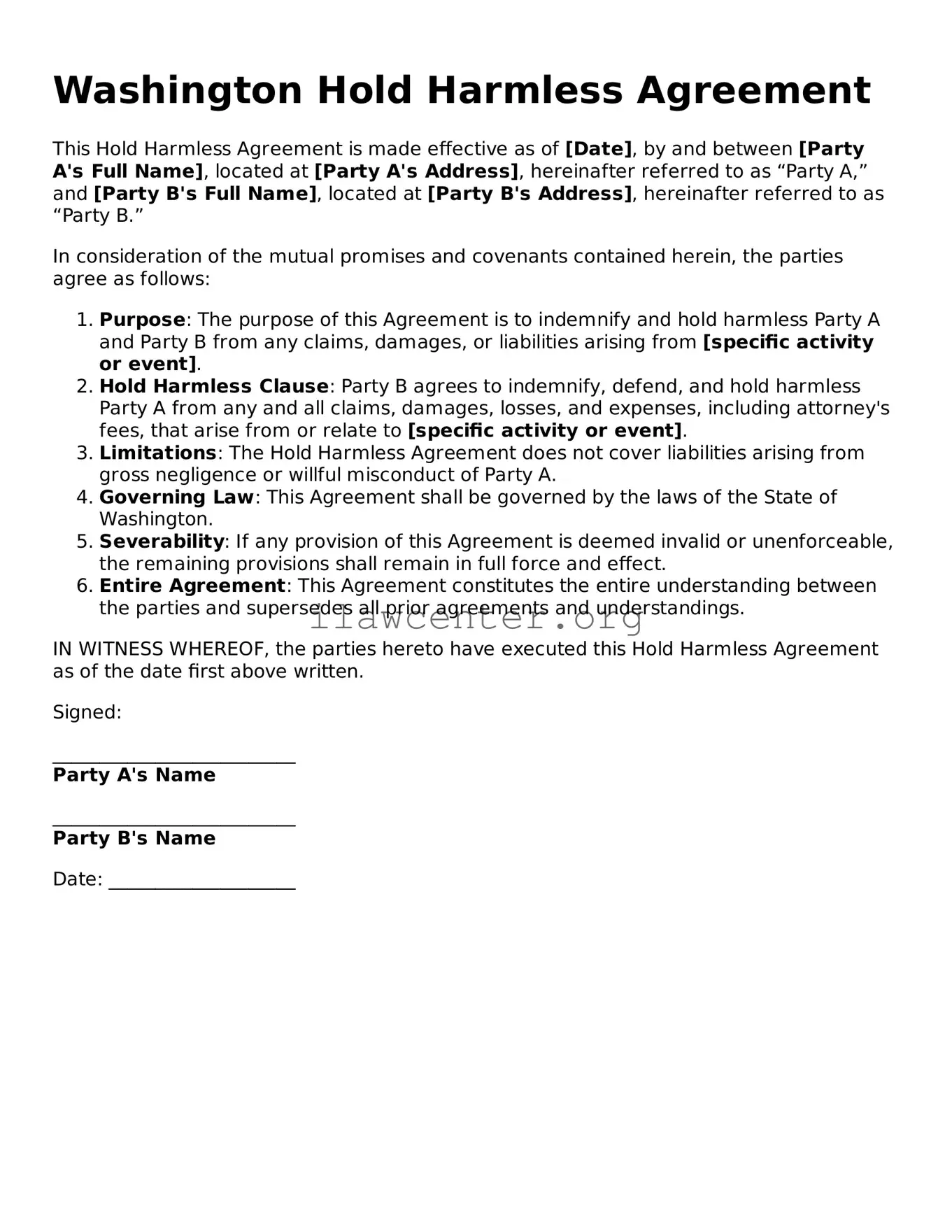What is a Hold Harmless Agreement in Washington?
A Hold Harmless Agreement is a legal document that protects one party from liability or claims for damages caused by another party. In Washington, these agreements are often used in various situations, such as contracts for services, property leases, or community events. Essentially, one party agrees to take responsibility for any injuries or damages that may arise, shielding the other party from financial responsibility.
Who typically uses a Hold Harmless Agreement?
Many different individuals and organizations can utilize a Hold Harmless Agreement. Common users include businesses engaging in contracts with vendors, property owners who rent out space for events, and non-profits hosting community gatherings. By using this agreement, parties can clarify their responsibilities and potentially avoid disputes over liability.
Are there different types of Hold Harmless Agreements?
Yes, there are generally two types: broad and limited. A broad Hold Harmless Agreement protects one party from all forms of liability, including those caused by their negligence. In contrast, a limited agreement typically only covers liability arising from specific actions or activities. The choice between these types depends on the situation and the level of risk involved.
Is a Hold Harmless Agreement enforceable in Washington?
Yes, Hold Harmless Agreements are generally enforceable in Washington as long as they meet certain legal requirements. They must be clear, unambiguous, and voluntarily agreed upon by both parties. However, an agreement may not protect a party from liability caused by gross negligence or willful misconduct. Courts often examine these agreements closely, especially in situations involving significant risks.
How can I create a Hold Harmless Agreement?
Creating a Hold Harmless Agreement involves several key steps. First, clearly identify the parties involved and describe the specific activities covered by the agreement. Next, outline the responsibilities and liabilities each party will assume. It's advisable to use straightforward language and avoid overly complicated terms. Finally, ensure both parties sign the document, and consider having it notarized for added credibility. Consulting with a legal professional can provide further guidance to ensure the document meets legal standards.
